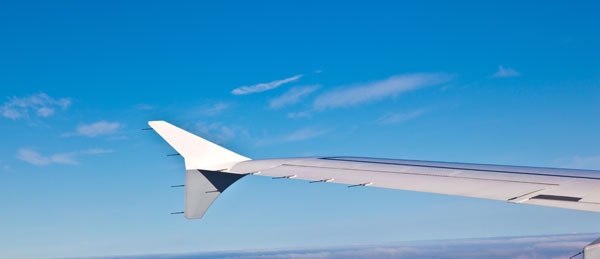
Next time you are at the airport, glance at the wing of a jet. You’ll likely see the tip of the wing is bent upwards. That vertical projection is known as a winglet.
A relatively small device that goes unnoticed by most passengers, winglets have made a big impact on fuel efficiency since they were first installed in the 1990s.
Winglets both reduce drag and increase lift, diminishing the effects of the whirling air storms that form at the end of the wings when a plane is in flight. An aircraft outfitted with winglets cuts more easily through the sky and uses up to 6 percent less fuel than a plane without winglets.
That amount may seem insignificant, but the savings in fuel costs to air carriers is sizable. Large airlines, for which fuel is the greatest and most unpredictable expense, save millions of dollars annually due to winglets.
Even a charter air carrier such as Cirrus Aviation experiences savings that are substantial enough to offset the manufacturers’ costs of installing winglets. Because winglets place stress on the wings, some structural strengthening is required.
Winglets offer other benefits: Lower fuel costs help to keep passengers’ travel costs down, and less fuel burned means reduced carbon dioxide emissions.
In the future, you’re likely to see more innovations on winglet design. “Blended” versions of the device, for example, are a seamless integration of wing and winglet.
Split winglets are also showing up on jets. They appear to have split a wing in two at the tip.
There is even a looped design being tested that is said to reduce fuel consumption by as much as 10 percent. Call (702)-472-9714 for all of your private jet inquiries.









